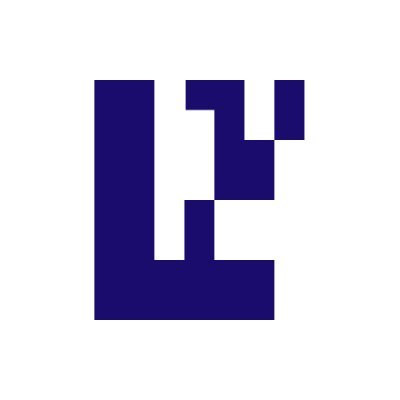EigenLayer is a protocol built on Ethereum that introduces restaking, a new primitive in cryptoeconomic security. This primitive enables the reuse of ETH on the consensus layer. Users that stake ETH natively or with a liquid staking token (LST) can opt-in to EigenLayer smart contracts to restake their ETH or LST and extend cryptoeconomic security to additional applications on the network to earn additional rewards.
PoC Required
Rewards
Rewards by Threat Level
Mainnet assets:
Reward amount is 10% of the funds directly affected up to a maximum of:
$2,000,000Minimum reward to discourage security researchers from withholding a bug report:
$250,000Rewards are distributed according to the impact the vulnerability could otherwise cause based on the Impacts in Scope table further below.
Reward Calculation for Critical Level Reports
For critical Smart Contract bugs, the reward amount is 10% of the funds directly affected up to a maximum of USD 2,000,000. The calculation of the amount of funds at risk is based on the time and date the bug report is submitted. However, a minimum reward of USD 250,000 is to be rewarded in order to incentivize security researchers against withholding a bug report.
For Critical website and application bug reports, the reward amount is 10% of the funds directly affected up to a maximum of USD 100,000. The calculation of the amount of funds at risk is based on the time and date the bug report is submitted. However, a minimum reward of USD 50,000 is to be rewarded in order to incentivize security researchers against withholding a bug report.
Repeatable Attack Limitations
In cases of repeatable attacks for smart contract bugs, only the first attack will be counted, regardless of whether the smart contract is upgradable, pausable, or killable.
Reward Calculation for High Level Reports
For High Smart Contract bugs, the reward amount is 10% of the funds directly affected up to a maximum of USD 250,000. The calculation of the amount of funds at risk is based on the time and date the bug report is submitted. However, a minimum reward of USD 50,000 is to be rewarded in order to incentivize security researchers against withholding a bug report.
Previous Audits
EigenLayer has provided these completed audit review reports for reference. Any unfixed vulnerability mentioned in these reports are not eligible for a reward.
- Any audits listed at https://github.com/Layr-Labs/eigenlayer-contracts/tree/mainnet/audits
- Any audits listed at https://docs.eigenlayer.xyz/eigenlayer/security/audits
Feasibility Limitations
Bug reports that require an attack that involve one or more other protocols (e.g. utilizing flash loans from a margin protocol or manipulating the spot prices on a DEX), either to make an attack more severe than it would be in isolation, or to achieve an attack that would otherwise be impossible or infeasible, would be out of scope. However, they will be considered as in-scope and categorized according to the program rules as long as all of the following are true:
- Losses or other negative effects of the attack are inflicted upon EigenLayer ecosystem participants
- The additional protocols used must have enough liquidity in various assets to allow the attack to succeed at the time of bug report submission. For example: if an attack requires an ETH flash loan, but the amount is larger than all the ETH available for loan across the ecosystem
If issues are associated with the pausing functionality of the contract, then the severity will depend on whether the feature was paused or not at the time of the report.
Program Overview
EigenLayer is a protocol built on Ethereum that introduces restaking, a new primitive in cryptoeconomic security. This primitive enables the reuse of ETH on the consensus layer. Users that stake ETH natively or with a liquid staking token (LST) can opt-in to EigenLayer smart contracts to restake their ETH or LST and extend cryptoeconomic security to additional applications on the network to earn additional rewards.
For more information about EigenLayer, please visit https://www.eigenlayer.xyz/.
EigenLayer provides rewards in USDC. For more details about the payment process, please view the Rewards by Threat Level section further below.
KYC not required
No KYC information is required for payout processing.
Proof of Concept
Proof of concept is always required for all severities.
Responsible Publication
Category 3: Approval Required
Prohibited Activities
- Any testing on mainnet or public testnet deployed code; all testing should be done on local-forks of either public testnet or mainnet
- Any testing with pricing oracles or third-party smart contracts
- Attempting phishing or other social engineering attacks against our employees and/or customers
- Any testing with third-party systems and applications (e.g. browser extensions) as well as websites (e.g. SSO providers, advertising networks)
- Any denial of service attacks that are executed against project assets
- Automated testing of services that generates significant amounts of traffic
- Public disclosure of an unpatched vulnerability in an embargoed bounty
- Any other actions prohibited by the Immunefi Rules
Feasibility Limitations
The project may be receiving reports that are valid (the bug and attack vector are real) and cite assets and impacts that are in scope, but there may be obstacles or barriers to executing the attack in the real world. In other words, there is a question about how feasible the attack really is. Conversely, there may also be mitigation measures that projects can take to prevent the impact of the bug, which are not feasible or would require unconventional action and hence, should not be used as reasons for downgrading a bug's severity.
Therefore, Immunefi has developed a set of feasibility limitation standards which by default states what security researchers, as well as projects, can or cannot cite when reviewing a bug report.


